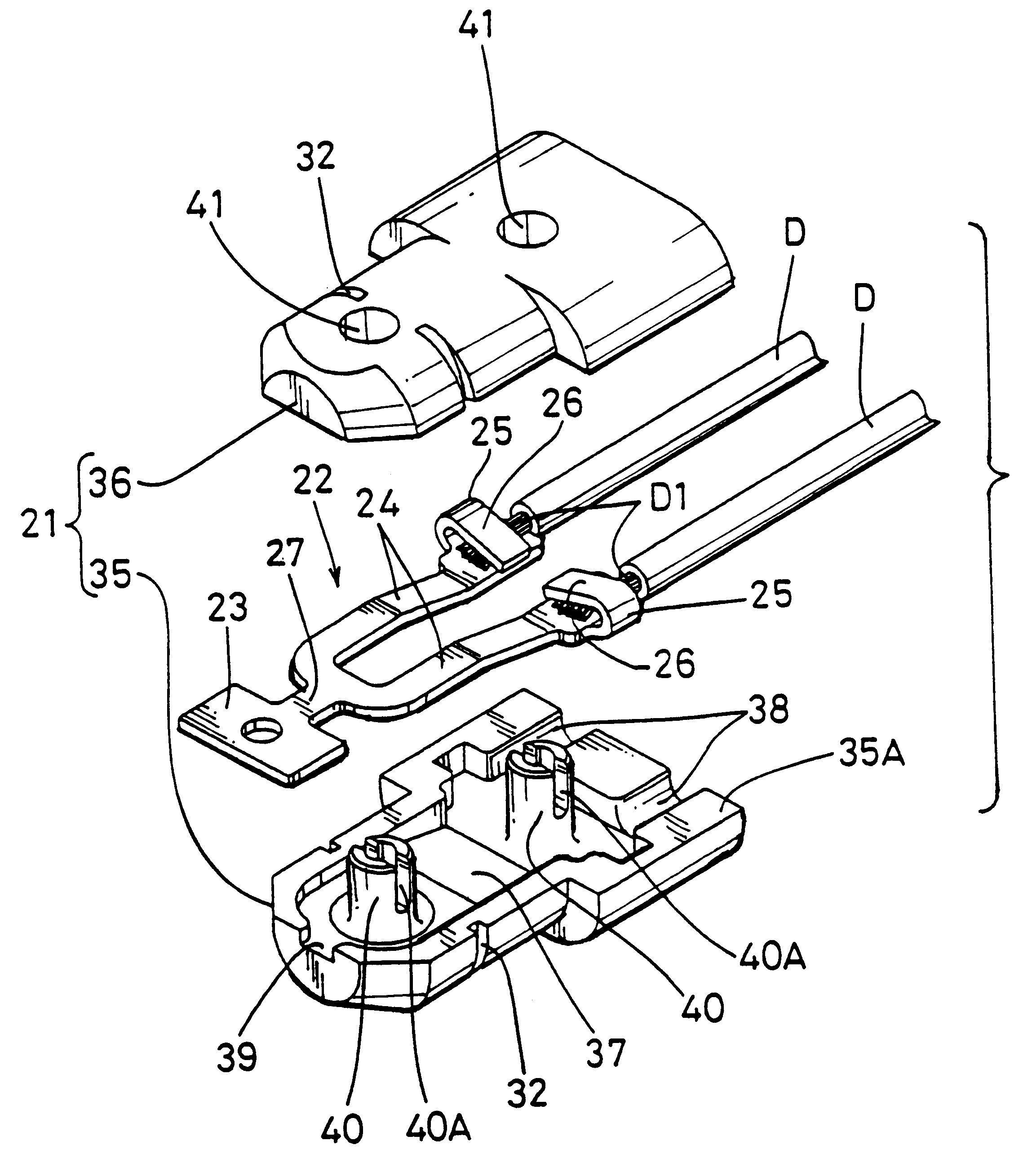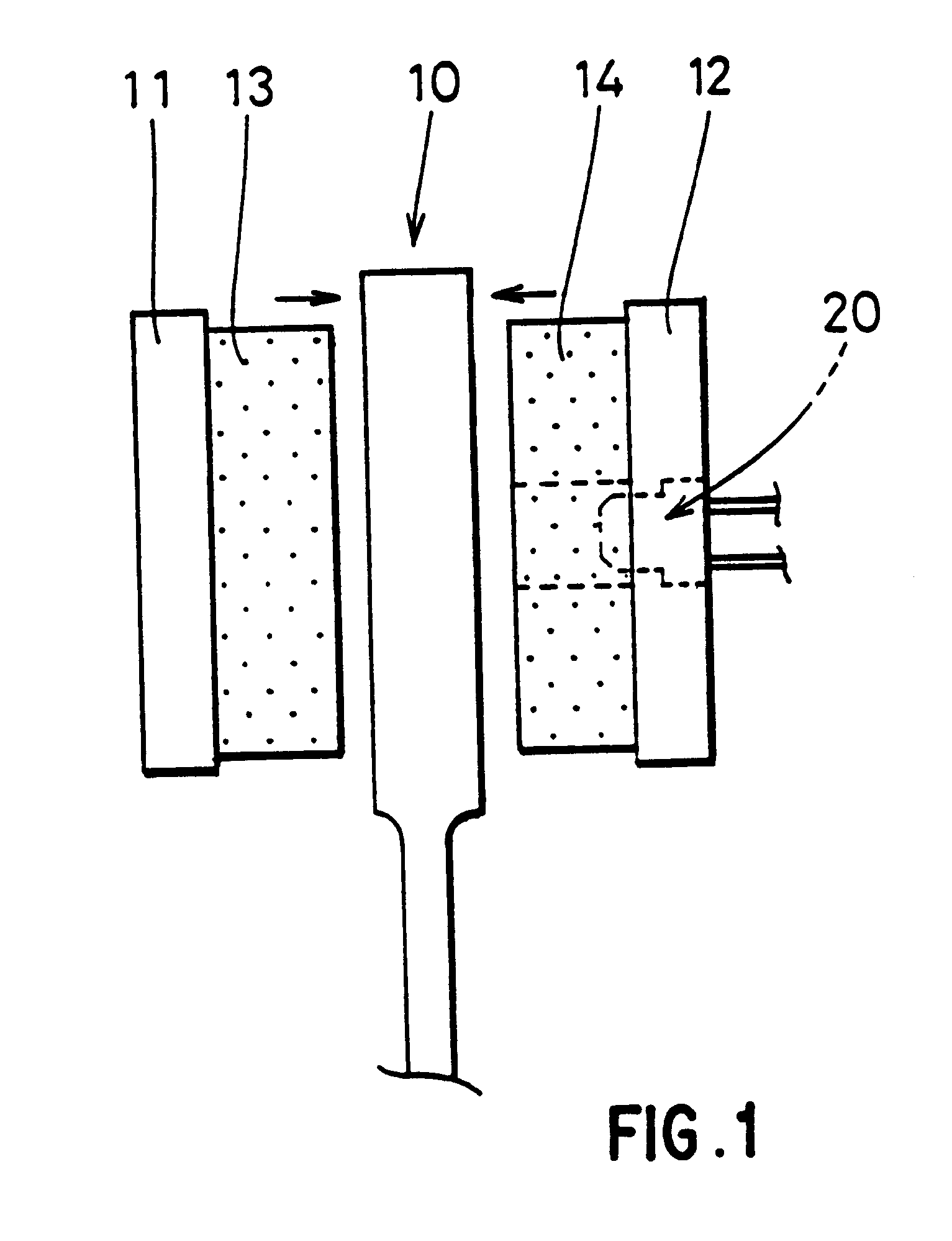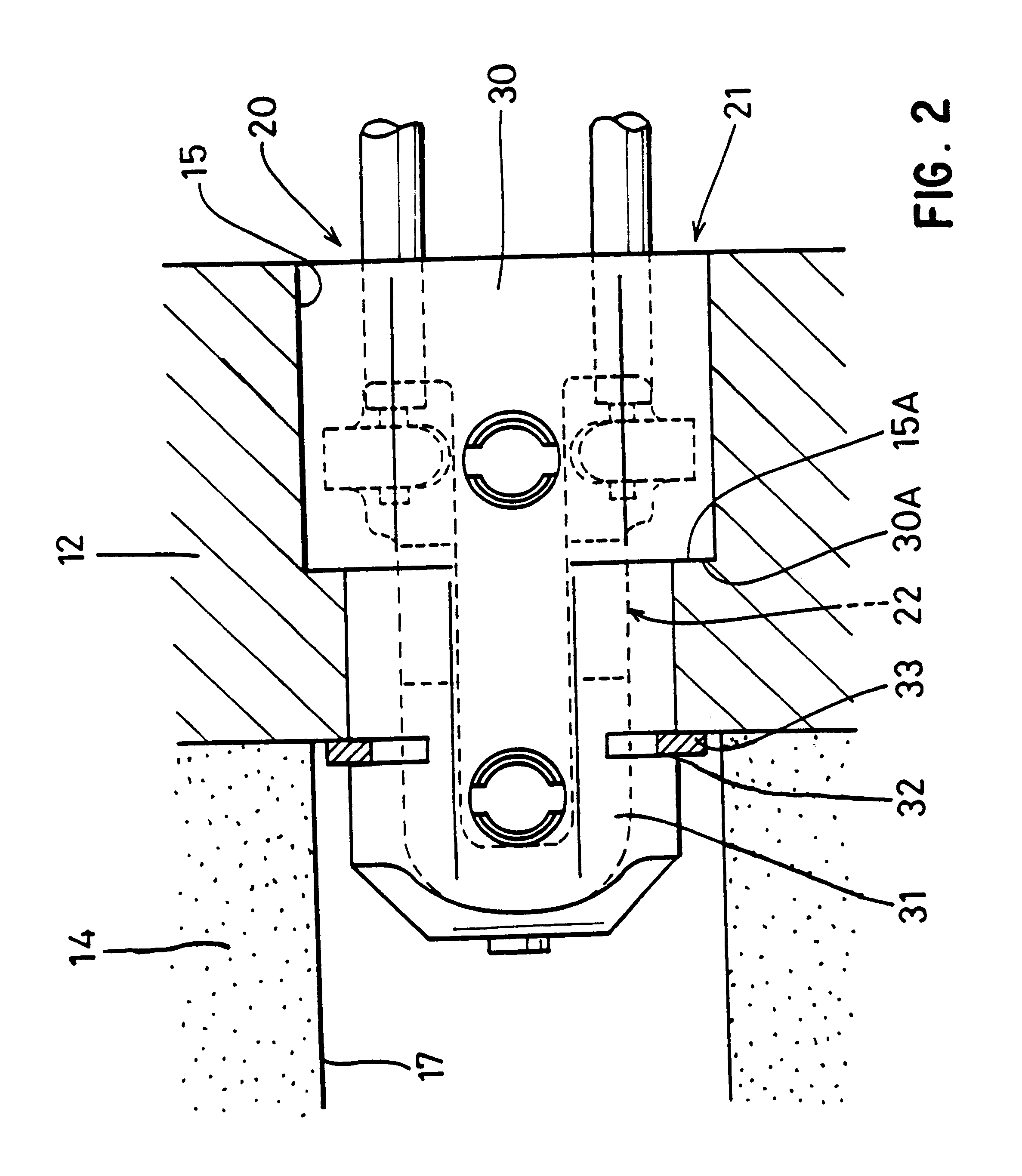Abrasion detecting probe for a brake pad
a technology for detecting probes and brake pads, applied in the direction of brake types, mechanical devices, etc., can solve the problems of time-consuming operation, troublesome operation, and allowing cost reduction
- Summary
- Abstract
- Description
- Claims
- Application Information
AI Technical Summary
Problems solved by technology
Method used
Image
Examples
first embodiment
A first embodiment is described with reference to FIGS. 1-7.
FIG. 1 shows the components of a braking device. The number 10 in FIG. 1 refers to a brake disc, a pair of backplates 11 and 12 being provided on both sides thereof, brake pads 13 and 14 being provided on the backplates 11 and 12 on the sides thereof facing the disc 10. The backplates 11 and 12 are moved towards the disc 10 by a mechanism (not shown), and as a result, the brake pads 13 and 14 press against the disc 10 and frictional force halts the rotation of the disc 10. This is conventional.
As shown in FIG. 2, an abrasion detecting probe 20 suitable for use in the present invention is attached by being inserted into a through hole 15 formed in a backplate 12, the anterior end of the probe 20 protruding into a through hole 17 formed in the brake pad friction material 14.
As shown in FIG. 3, the probe 20 is provided with a terminal 22 made of metal and located within a base member 21 of synthetic resin. The terminal 22 is p...
second embodiment
the invention is illustrated in FIGS. 8-10, the same parts having common reference numerals.
As illustrated a sleeve 50 surrounds the base components 35,36, and maintains them in an attached state. The sleeve 50 is a tight push fit over the components 35,36. As illustrated, the sleeve 50 projects slightly beyond the tip 27 of the terminal 22, so that as the pad approaches the abrasion limit, the sleeve 50 rubs against the disc. A bracket 52 holds the probe in the brake pad. The sleeve is made of a material, such as metal, which will make a noise as it is worn away; in this way the driver can hear an audible signal that the abrasion limit is about to be reached.
The sleeve 50 also has the advantage of preventing separation of the components 35,36 during transport from a connector manufacturing location to a brake pad installation location. Furthermore, if the brake pad is replaced when the audible warning is first heard, there is no need to replace the probe itself--the probe can simpl...
PUM
 Login to View More
Login to View More Abstract
Description
Claims
Application Information
 Login to View More
Login to View More - R&D
- Intellectual Property
- Life Sciences
- Materials
- Tech Scout
- Unparalleled Data Quality
- Higher Quality Content
- 60% Fewer Hallucinations
Browse by: Latest US Patents, China's latest patents, Technical Efficacy Thesaurus, Application Domain, Technology Topic, Popular Technical Reports.
© 2025 PatSnap. All rights reserved.Legal|Privacy policy|Modern Slavery Act Transparency Statement|Sitemap|About US| Contact US: help@patsnap.com



